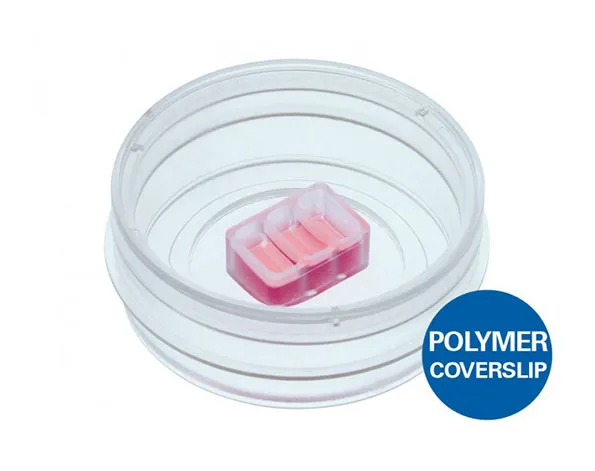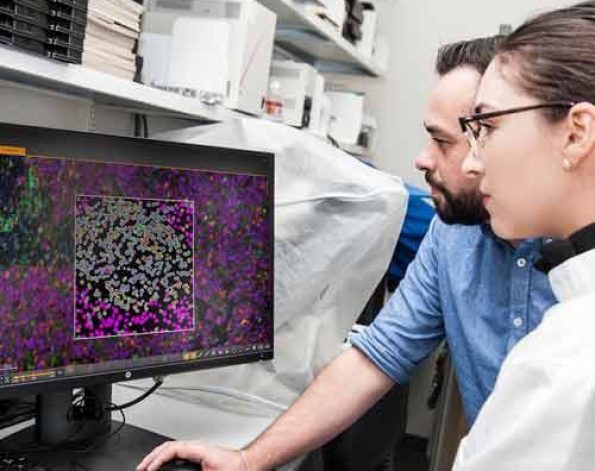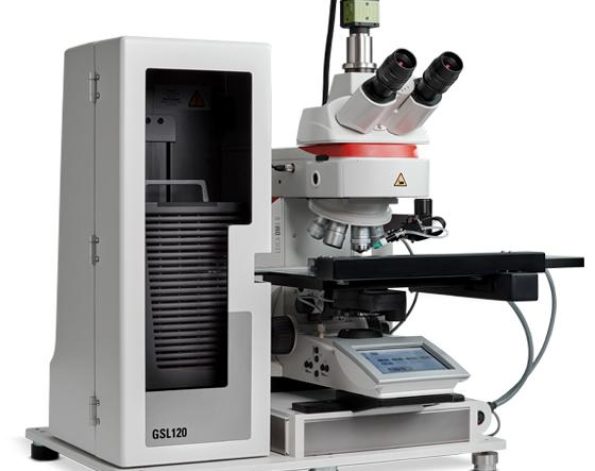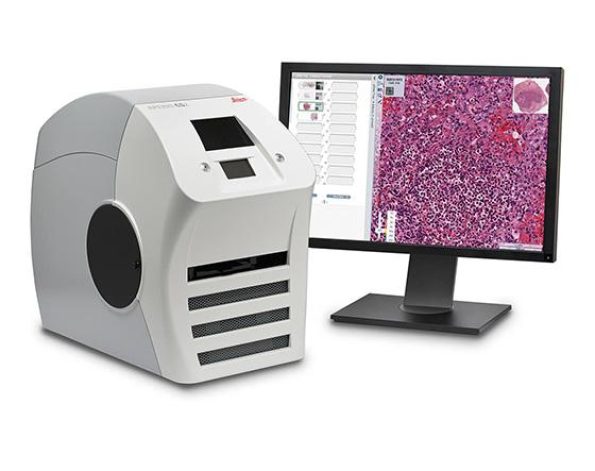จานเพาะเลี้ยงเซลล์พร้อมซิลิโคนแบบ 3 ช่อง – สามารถกำหนดช่องว่างระหว่างเซลล์ได้ 2 ส่วน สำหรับการทดลองแบบ wound healing, การทำ cell migration, การทำ 2D invasion หรือการเลี้ยงเซลล์
- เหมาะสำหรับการทดลองแบบ wound healing
- สามารถทำการทดลองซ้ำได้เนื่องจากช่องว่างของส่วนที่เป็นซิลิโคนมีขนาด 500 µm เท่ากันทุกชิ้น โดยซิลิโคนติดแน่นกับก้นจานมั่นใจได้ว่าไม่มีการรั่วซึมของอาหารเลี้ยงเซลล์
- สำหรับการทดลอง 3 experiments แบบคู่ขนาน
- มีเทคโนโลยี ibiTreat surface เพื่อการเจริญเติบโตของเซลล์ในอุดมคติ
A 3 well silicone insert with two defined cell-free gaps, suitable for wound healing, migration assays, 2D invasion assays, and co-cultivation of cells
- Complete solution for wound healing experiments, requiring only a few steps from sample preparation to image analysis
- Reproducible experiments owing to: two defined 500 µm cell free gaps, no leakage during cultivation, and no material being left behind after the insert’s removal
- Suitable for 3 experiments in parallel
- Individual inserts for single experiments
- Ideal cell growth on ibiTreat surface
- Surface Modification: ibiTreat: #1.5 polymer coverslip, tissue culture treated, sterilized
Pcs./Box: 30 (individually packed)
Product Variation: in µ-Dish 35 mm, high
Applications
Specifications
| Number of wells | 3 |
| Outer dimensions | 8.4 x 12.15 x 5 mm (w x l x h) |
| Volume per well | 70 µl |
| Growth area per well | 0.22 cm² |
| Coating area per well | 0.82 cm² |
| Width of cell free gap | 500 µm +/- 100 µm |
| Material | Biocompatible silicone |
| Bottom | No bottom – sticky underside |
Technical Features
- Culture-Insert 3 Well, pre-inserted into the µ-Dish 35 mm, high
- Biocompatible silicone material with adhesive underside
- Ready-to-use: the Culture-Insert is already placed in the µ-Dish 35 mm, high
- Clean surface after insert removal without remaining material
- Find full specifications and technical details of the µ-Dish here
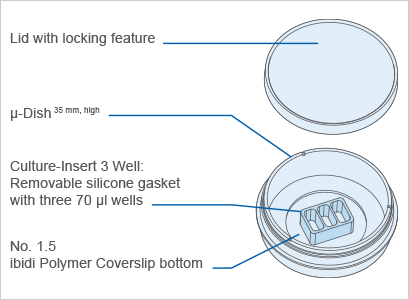
Principle for Wound Healing and Migration Assays

Various Applications
Wound Healing / Migration
Wound healing and migration assays are done by seeding cells into the Culture-Insert 3 Well. After cell attachment, two cell-free gaps are created in which the cell migration can be visualized. Compared to the 2 well version, more cells can be analyzed and a higher throughput is achieved. Two cell-free gaps create a technical replicate in the very same plate or dish.
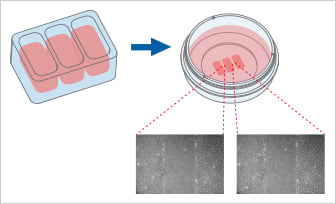
Two Conditions of Wound Healing / Migration
With the Culture-Insert 3 Well, a wound healing experiment and a control experiment can be done in the same well. The control cells can be pre-treated with any kind of treatment (e.g., drugs, plasmids, mRNA, or virus particles).
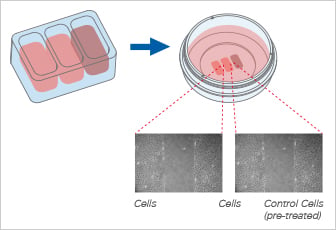
Co-Cultivation / Invasion
By seeding two different cell types, the invasiveness of adherent cells can be analyzed. Non-invasive cell types can be cultured next to each other, sharing the same medium. This co-culture allows the cells to communicate and share factors for differentiation studies or long-term culturing.
Invasion and co-cultivated cells can be imaged by high-resolution fluorescence microscopy.
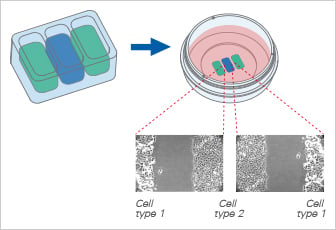
visualization of Cell Migration
Live cell imaging of a wound healing and migration assay using the MCF7 cell line. Objective lens 10x, phase contrast microscopy.
